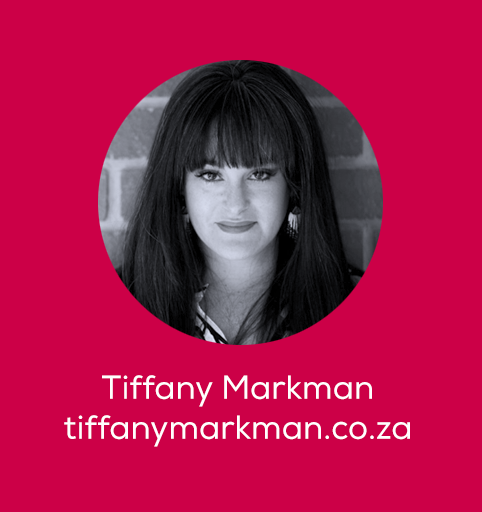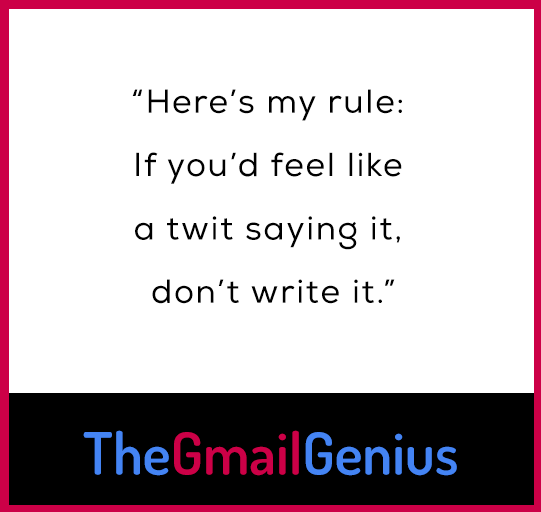How I Email: Tiffany Markman, Freelance Writer and Writing Trainer
Email is a non-negotiable part of everyday life. For some, it’s an unruly time suck, but enlightened email users have systems to ensure they’re not a slave to the inbox. We’re asking smart thinkers to give us a peek inside their inboxes, share tips, ideas, gripes, and everything in between.
Tiffany Markman is a sought-after South African business copywriter and trainer. She’s worked with clients in industries ranging from retail to law and has delivered her business writing presentations to audiences across the globe. She recently released a course on writing better business emails. We got a glimpse of her best tips and she offered some strong (and entertaining!) views on what it means to be a better emailer.
 What does your daily email routine look like?
What does your daily email routine look like?
Unlike many business owners (and most writers) I like email. There’s a twisted little dopamine hit I get from new emails flooding in, first thing in the morning. Like an army of little digital opportunities. But that’s because email and I have a strong mutual respect, based on rules:
1) I exit my email programme when my workday ends. While I do have email on my phone, it’s set to pull, not push, and I don’t get notifications sent to my watch.
2) My self-imposed limit is Inbox12. This is completely made up and largely a function of my fanatical need for tidiness and control. But, like a neat desk, it works for me.
3) I check my email first thing, around 6am, on my phone. About 20-30 new emails come in overnight but I seldom reply to them at that stage — unless there’s a crisis.
4) Post the morning rush (in my case, child-wrangling, school drop-off/an exercise class, an early client meeting), I get to my desk around 9:30 am and only then do I dive into email properly, with coffee. It sets up my day and gets me into a state of flow. This usually takes an hour or so, and then it’s 10:30 am, my optimal writing time of day.
5) My email is open all day but, if I’m writing or teaching, I won’t engage with it until I need to, or I’ll nip in twice more before the final Inbox12 check, which is either at 6 pm when I typically stop working, or around 10 pm if I’m working late.
6) Any time spent waiting in line, in clients’ reception areas, at government offices, or outside school will see me on my laptop, firing off emails. I adore “dead time.”
7) I use folders to store emails that I’ve dealt with but may need later: Admin, Freelancing, Training, Marketing, Personal and Remember. (Remember is for stuff I must see to at some vague future point.) Everything else is read and deleted.
8) I swear by three things: unroll.me, followupthen and my templates. I love a template, because I encounter many of the same queries day after day and I send a lot of repeat emails: responses to quote requests, replies to speaking engagements and teaching enquiries, copy submissions to clients, explanations of my services, etc. I have 26 colour-coded templates on the go right now. They make me inappropriately happy.
You have a new Skillshare course on writing business emails. Why create a course on this topic? Do the people who need the most help know they should take this course?
If they don’t know they need help, their managers and colleagues probably do!
But, yes, I think most people know when they dislike or put off writing emails, find that emailing takes too much of their time, or feel anxiety about their first impressions.
The reason I created the class on email writing is to share some of the quick fixes people can use to alleviate that dislike, delay or anxiety — because most of us battle with the same few things: deciding what to include or omit, starting off, the use of old-fashioned language, typos or errors creeping in, readers not responding to us correctly or on time, etc.
Also, I think that most people could be better (more efficient, focused, thoughtful and targeted) at emailing, even if they’re already above-average communicators in other ways.
 What two or three things can anyone reading this do today to improve their emails?
What two or three things can anyone reading this do today to improve their emails?
Watch my email writing class 😉
And here are 3 extra tips:
Lists and bolding are your friends. As its length increases, an email becomes more difficult to read. People don’t have the inclination to wade through heaps of wording, so chunking your email into several shorter sections will make it more digestible. Use numbered lists, bulleted lists and bolded subheadings, so different sections of text become easier to scan and assimilate. And if there are multiple people on one email, bold the names when you address individuals.
Dump any old-fashioned defaults. In an attempt to write professionally, we often follow old-fashioned writing rules in our emails and write in an overly formal tone. Although the ability to pad skimpy writing with fancy words gives us extra confidence, because it makes our writing seem more substantial, the reality is that it’s less compelling and less powerful. Here’s my rule: If you’d feel like a twit saying it, don’t write it.
Regards, Kind regards, or what? I made a 2-minute video about this a few weeks ago.
If you could magically change something about email, what would it be?
If I could banish all versions of “I trust this email finds you well” from the face of the digital earth, I’d be ecstatic. It’s boring, overused and insincere. We use it as our default opener, because we’re reluctant to dive straight into our message out of fear that this is abrupt or rude. But “I hope you are well” is inauthentic, and the reader knows it. I’d love email writers to try alternatives like, “Thank you for your email…” or “I’m Tiffany, the writing trainer. I was referred by…” or “This is a quick courtesy follow-up…” or “It was great to chat with you earlier.”